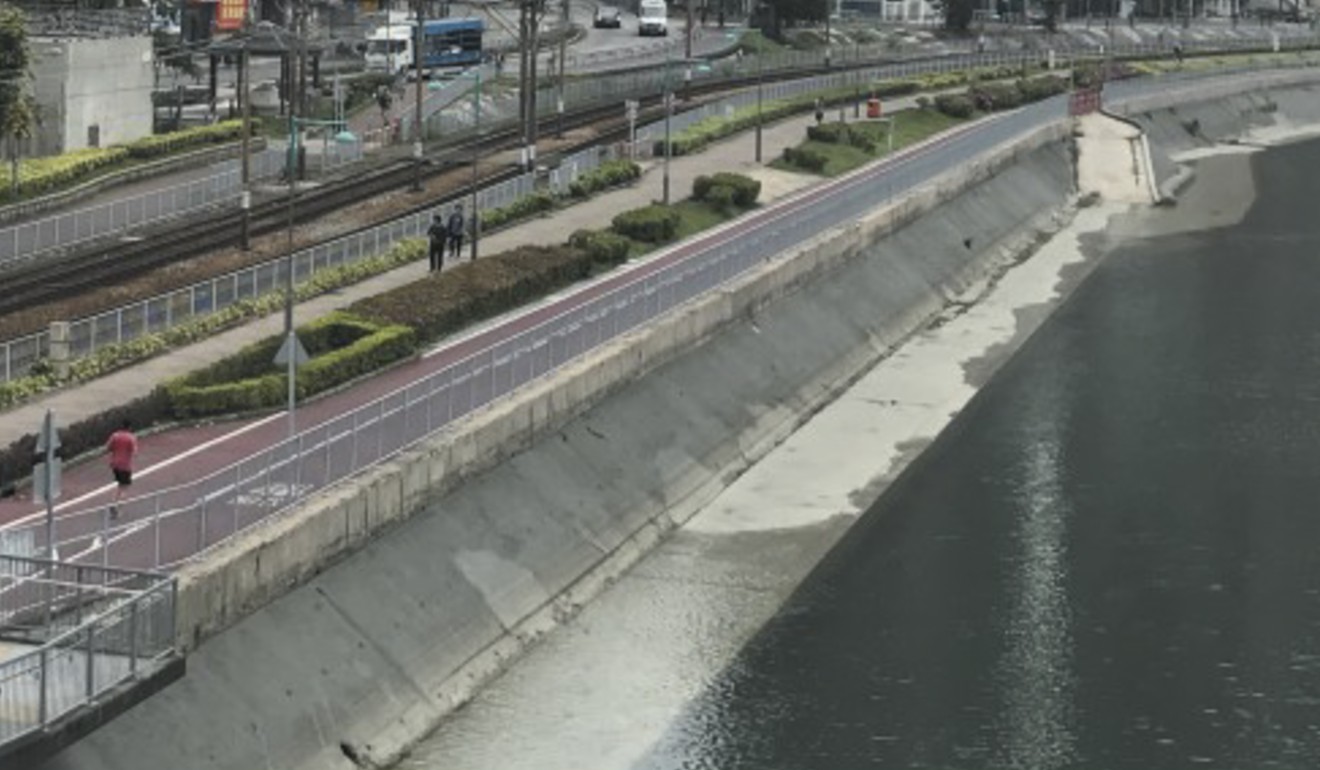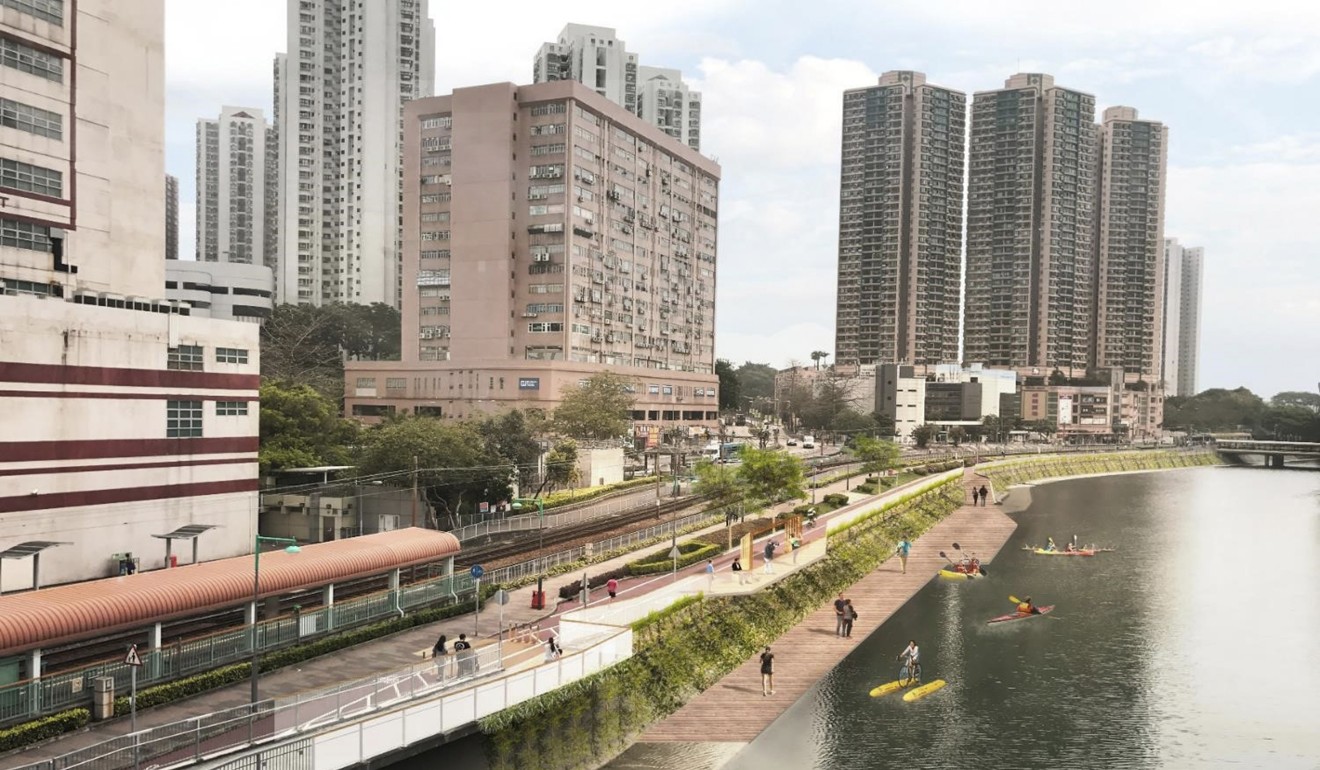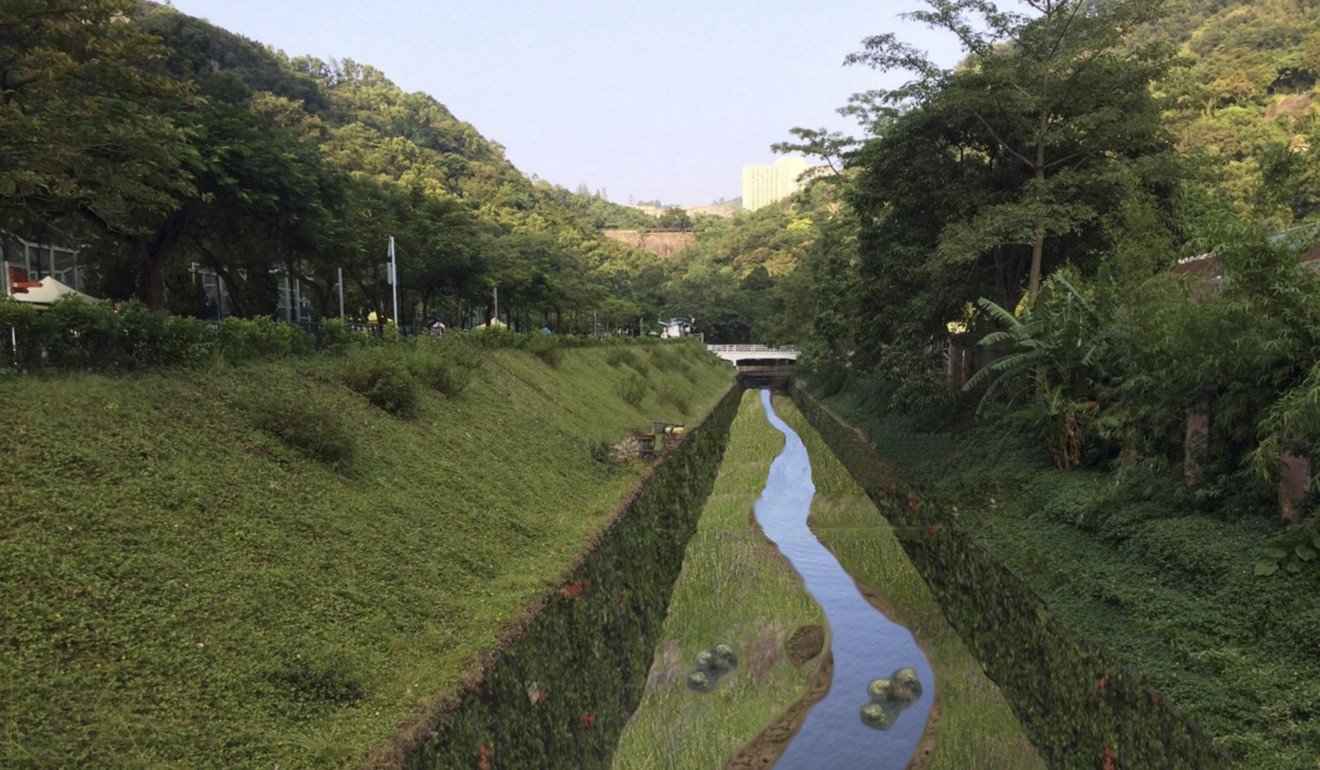
Number of Hong Kong’s bleak concrete waterways could be transformed under revitalisation plan
Dozens of rivers and nullahs have been shortlisted for possible redevelopment

At least 45 of Hong Kong’s drab, concrete-edged rivers, now void of any life or greenery, could get new leases of life after being shortlisted for possible revitalisation.
Four of these – Tai Wai Nullah, Tuen Mun River, Jordan Valley Nullah in Kwun Tong and the Fo Tan Nullah in Sha Tin – have been identified as having the greatest potential for greening and landscaping work, biodiversity improvements and even for water sports, according to Edwin Tong Ka-hung, the city’s drainage chief.
If all goes to plan, work to give Jordan Valley Nullah a facelift could begin as soon as 2019.
“Even if we can’t allow people to go near the water, we will still do greening work so as not to make [them] look like such a drab, concrete drains,” Tong said.
The options are a result of a three year consultancy study launched in 2015 to assess the revitalisation prospects of the city’s 228 rivers and nullahs and to compile a proper database. After preliminary assessments, 45 made the cut, having met the criteria for factors such as water quality, flow, accessibility and development density. The feasibility study will be completed before the end of 2018.
Like most of the city’s waterways, these have been cemented, straightened and trained over the years to function solely as drainage systems for flood protection, but lack any ecological, visual or recreational value.

The Drainage Services Department has been trying to change this by incorporating more “blue-green” designs to nullahs that can promote flora and fauna, especially in new towns, without compromising flood management capacity. The government is also trying to promote a “water-friendly culture”.
Earlier experiments have been carried out at Ho Chung and Lam Tsuen rivers. Kai Tak and Tsui Ping nullahs in Kowloon East are now getting makeovers.
Tong said work on Jordan Valley Nullah would be the quickest to come to fruition, given its relatively short length and narrow structure.

He expected the cost to be “below HK$30 million”, meaning they would not have to apply for funding at the Legislative Council public works subcommittee. But the costs of work on the other three larger rivers is expected to be higher.
Conceptual images provided by the department show the 200-metre Jordan Valley Nullah lined with vegetation and a bed of soil-like substrate, with the river meandering through.
A similar design is planned for Tai Wai Nullah, though whether it will be safe enough for the public to access it at water level is still not known.

The 1km to 2km midstream section of Tuen Mun River could feature an open boardwalk at water height spanning about 100 to 200 metres. The illustrations show people paddle boarding and kayaking in the river.
“This river is quite wide so the amount of time it takes for water levels to rise is not as quick. In the future, if we allow residents down to walk along the river, we can introduce some sort of alert system to leave [when there is danger],” said Tong.
University of Hong Kong geography professor Dr Ng Cho-nam, who studies rivers, said the city underestimated the value of healthy, appealing, multifunctional watercourses to towns.
“Sha Tin is built around a river. The environment is much different than Tuen Mun, which is essentially built along a drainage channel,” he said.
For the same reasons, Ng was worried about the department’s ability to justify and secure funding for engineering projects that were not “functional”.
Meanwhile, the department is also preparing to seek funding to assess the safety of about 250km of drainpipes across the city, many of which have been in use for decades, and conduct repairs on those at high risk of breakage.
It expects to fork out about HK$500 to 600 million per year over the next 15 years.